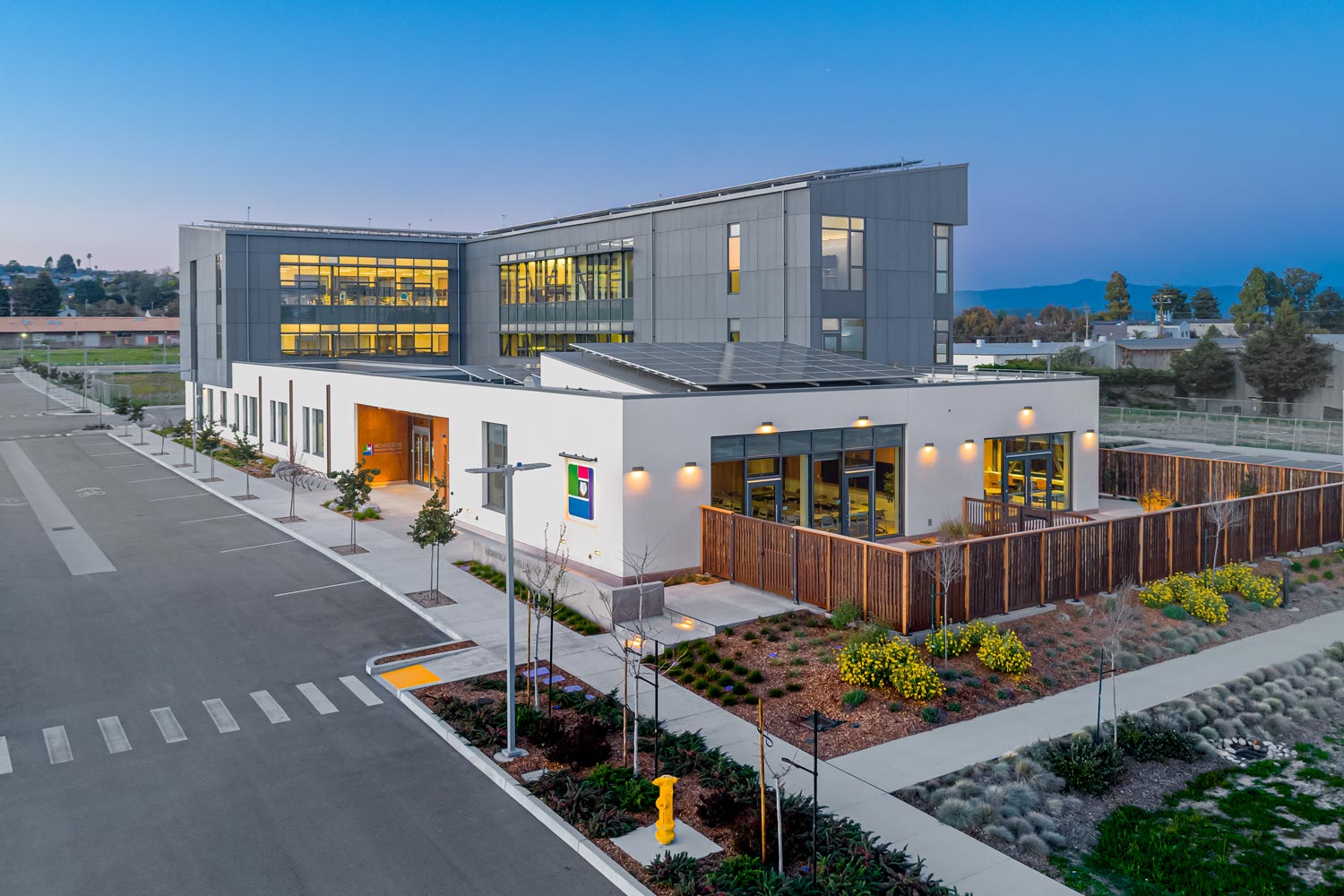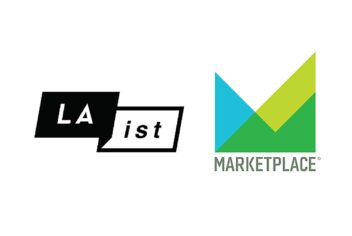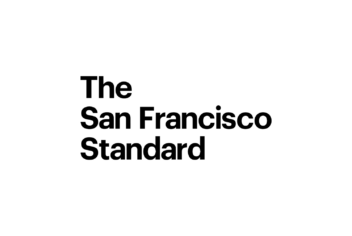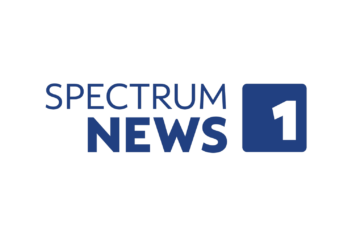NIA's mission statement.
Nonprofits Insurance Alliance® is a group of 501(c)(3) nonprofit insurers whose sole purpose is to serve other 501(c)(3) organizations by providing a stable source of fair and equitably priced liability and property insurance — all tailored to meet the specialized needs of the nonprofit sector and to assist these organizations to develop and implement successful risk management programs.

The Nonprofits Insurance Alliance (NIA) building in Santa Cruz, California
From vision to reality: It started with NIAC.
Nonprofits Insurance Alliance (NIA) began as a direct result of the liability insurance crisis of the mid-1980s, when many insurance companies were refusing to offer affordable liability insurance to nonprofits, believing them to be “high risk.”
At the time, Pamela Davis, now President and CEO of Nonprofits Insurance Alliance, was a graduate student at the Goldman School of Public Policy, UC Berkeley.
The following is an excerpt from her testimony before the California Assembly in 1987:
“Between 1984 and 1986, general liability insurance premiums increased 200 percent or more for 1 out of 4 charitable nonprofit organizations in California.
During that same period, insurance companies canceled or refused to renew the general liability policies of 1 out of 5 California charitable nonprofits.
Some important human service programs, such as childcare, foster care, group homes and health service were forced to dramatically cut services or close because they couldn’t find affordable insurance.”
With a determination to see nonprofits resume their important work, Ms. Davis proposed the idea of creating a risk pool in her master’s thesis. Risk pools would allow nonprofits to insure themselves — and no longer be at the mercy of commercial insurers.
A number of foundations agreed to back the idea and two years later, under her leadership, Nonprofits Insurance Alliance of California (NIAC) opened its doors.
Starting with only $1.3 million in low-interest loans, NIA now has more than $800 million in assets. And, yes, the loans were paid off — with interest!
Expanding beyond California: ANI
In 1999, a feasibility study, underwritten by the David & Lucile Packard Foundation, was completed to determine what it would take to expand NIAC’s concept nationwide.
The results of that study led to Alliance of Nonprofits for Insurance (ANI) and its captive reinsurer, National Alliance of Nonprofits for Insurance (NANI). ANI, domiciled in Vermont, began writing policies outside California in 2001 as a Risk Retention Group.
NANI
National Alliance of Nonprofits for Insurance (NANI), an affiliate, also domiciled in Vermont, started as a reinsurer that same year.
AMS
Simultaneously with the creation of ANI and NANI, Alliance Member Services (AMS) was created to provide services at cost to the other companies in the group.
Together, the organizations of Nonprofits Insurance Alliance insure more than 27,000+ nonprofits in 32 states and DC. At year-end 2023, Nonprofits Insurance Alliance had total surplus of $225.2 million. All NIA companies are 501(c)(3) nonprofits.
Where NIA writes business.
Together, the organizations of Nonprofits Insurance Alliance® insure 27,000+ nonprofits in 32 states and the District of Columbia.
Click on any state to learn more about nonprofit insurance and programs in that state, or choose from this list of states.
Historical milestones.
In 1989, NIAC was funded with $1.3 million in loans provided by The Ford Foundation, The Wallace Alexander Gerbode Foundation, The David and Lucile Packard Foundation, The San Francisco Foundation, The Marin County Foundation, and The Walter S. Johnson Foundation.
NIA now insures 27,000+ nonprofits with their own group of insurers — and assets exceeding $800 million.
1989
- October 17: Nonprofits Insurance Alliance of California (NIAC) moves into its first office in downtown Santa Cruz.
- October 17: (5:04 p.m.) The Loma Prieta earthquake hits, devastating Santa Cruz.
- November 1: NIAC writes its first policy.
1991
- Auto physical damage, directors and officers, and umbrella coverages are introduced.
- NIAC’s audio-visual lending library is launched.
1993
- First bill is introduced in Congress to enable tax exemption for charitable risk pools.
1994
- Reinsurance arrangement with SwissRe is established.
- Companion property program is developed for members.
1996
- Congress adds Section 501(n) to the tax code, enabling NIAC to be a 501(c)(3).
- Free employment risk management consultation service is introduced.
- California adds Section 23701z to the state tax code, enabling state tax exemption for NIAC.
1997
- NIAC becomes federally tax-exempt under section 501(c)(3) in January of 1997.
- Free driver training is introduced.
- NIAC is featured in the PBS series Visionaries, which airs nationwide.
1998
- $150,000 grant is received from the David & Lucile Packard Foundation to develop business plan to expand the NIAC model outside California.
- Handling of claims is moved in-house — substantial savings!
1999
- NONPROFITS OWN® enhanced policy form is introduced.
- $5 million grant is received from the Bill & Melinda Gates Foundation for capital for ANI.
2000
- NIAC purchases and renovates a new headquarters building in downtown Santa Cruz.
- $5 million grant is received from the David & Lucile Packard Foundation for capital for ANI.
- Pamela Davis, Founder, President and CEO, is named one of the 100 Leading Women in the Insurance Industry by Business Insurance.
2001
- Nonprofits Insurance Alliance (NIA) starts operation: Alliance Member Services (AMS), National Alliance of Nonprofits for Insurance (NANI), and Alliance of Nonprofits for Insurance, Risk Retention Group (ANI) join Nonprofits’ Insurance Alliance of California (NIAC) to form NIA.
- All companies are 501(c)(3) nonprofits.
- ANI begins offering coverage in Colorado, Delaware, Washington, DC, Maryland, Nevada, and Virginia.
- Property program is introduced.
- AM Best Weighs in! NIAC receives A- (Excellent) AM Best rating, ANI and NANI receive B++ (Very Good) AM Best rating.
2002
- NIAC Board approves $1 million in returned premium to NIAC members.
- ANI expands into Connecticut, Michigan, Ohio, and Pennsylvania.
- Pamela Davis is listed in Nonprofit Times’ “Power and Influence 50.”
2003
- ANI expands into Iowa, Kansas, Missouri, Nebraska, Oregon, Utah, and Washington.
- NIA wins CIO 100 award from IDG’s CIO magazine for positive business performance through resourceful IT management and practices.
2004
- AM Best upgrades NIAC to A (Excellent).
- Pamela Davis wins first ever award for Policy Innovation from The Goldman School of Public Policy, UC Berkeley.
- ANI expands into Vermont.
- Secure website for both members and brokers is introduced.
2005
- New flat-rate D&O coverage is introduced for nonprofits with zero employees.
- Prior Acts Coverage becomes available.
- Pamela Davis is named one of the nation’s 15 Best Bosses by Fortune Small Business and Winning Workplaces.
- BOARDnetWORK is introduced for members — a free, web-based board management tool.
- Discounted background check service is introduced.
2007
- NIAC Board approves Dividend Plan and declares first dividend of $3.7 million for members.
- ANI expands into Georgia, Hawaii, Idaho, and Minnesota.
- AM Best upgrades ANI and NANI to A- (Excellent).
2008
- NIAC Board declares dividend of $4.2 million for members.
- ANI expands into Illinois, Nebraska, and North Carolina.
- Blue Avocado, new online magazine, is launched with the financial support of NIA.
2009
- NIAC Board declares dividend of $4.2 million for members.
2010
- NIAC Board declares dividend of $5 million for members.
- AM Best rates the NIA insurers together for the first time, assigning a rating of A VIII (Excellent) to all companies in NIA. Combined surplus exceeds $100 million.
- ANI expands into Arkansas.
- First-ever “sequel” of the documentary series Visionaries airs on PBS, featuring the growth of NIA.
2011
- NIAC Board declares dividend of $5 million for members.
- ANI expands into Florida.
2012
- NIAC Board declares dividend of $4 million for members.
- ANI expands to New Jersey, New York, North Dakota, South Dakota, and Wisconsin.
- American Nonprofits is launched with assistance from NIA.
- Electronic Data Interchange (EDI) web-based portal for brokers is launched.
2013
- NIAC Board declares dividend of $5 million for members.
- NIA wins insurance industry award for web-based portal for brokers.
- NIA is named one of the Bay Area News Group’s Top Workplaces.
- Partnership begins with National Assembly Business Services to provide group purchasing discounts to members.
2014
- NIAC Board declares dividend of $2 million for members.
- SB 1011, signed by Gov. Jerry Brown, allows NIAC to offer property coverage to members.
2015
- NIAC Board declares dividend of $1 million for members.
- ANI expands into Texas.
2016
- NIAC Board declares dividend of $2 million for members.
- NIAC begins directly writing property policies for nonprofits in California.
2017
- NIAC Board declares dividend of $2 million for members.
2018
- NIAC Board declares dividend of $3 million for members.
2019
- NIAC Board declares dividend of $3 million for members.
2020
- NIAC Board declares dividend of $3 million for members.
2021
- NIAC Board declares dividend of $3 million for members.
- AM Best increases NIA’s Financial Size Category (FSC) from “VIII” to “IX.”
2022
- NIA adopts a new Statement of Investment Beliefs that reflects the view that by integrating ESG considerations into investment decisions, it will benefit long-term performance in support of our mission.
- NIA successfully works with Pennsylvania nonprofits to pass HB 2214.
2023
- NIA successfully works with New York nonprofits to pass A.5718a / S.5959a, a bill that allows RRGs domiciled outside the state to write auto insurance policies to nonprofits across the state.
- A number of large commercial carriers exit the nonprofit market. As a result, NIA grows dramatically.
2024
- NIA launches a brand-new policy administration system.
- In an attempt to fix problems in California’s judicial system that prevent insurers from providing many coverages required by California foster family agencies (FFAs), NIA sponsors a bill called AB 2496. Unfortunately, the revised version signed into law renders California FFAs uninsurable for many coverages.
Latest headlines:
What’s next for foster families after an insurance shakeup threatens to upend thousands?
With most California foster family agencies (FFAs) in crisis due to a lack of insurance options, Los Angeles area FFAs fear agency closures and displacements may be imminent.
Thousands of foster kids could lose homes over insurance crisis
Bay Area foster family agencies and caregivers face a new reality as a dearth of insurance options threatens many organizations with closure.
Many of California’s foster kids could soon be displaced
With numerous foster family agencies facing closure in California, foster families worry for the kids in their care that may soon be separated from them.




